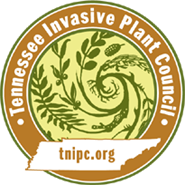Centaurea stobe L. ssp. micranthos (S.G.Gmel. ex Gugler) Hayek.
Centaurea stobe L. ssp. micranthos (S.G.Gmel. ex Gugler) Hayek.Centaurea biebersteinii DC., Spotted Knapweed
| Threat Level | Category |
|---|---|
| Established | Forb/Herb |

Description
Stem
Spotted Knapweed stems are erect, spreading, or ascending and can reach heights of 1-4 feet (0.3-1.2Â m). Stems are freely branching, blue-green in color and have short, thin hairs that can also make the plant appear silver-gray.Leaves
Leaves of first-year rosettes are deeply lobed and reach to 8 inches (20 cm) in length. They are oblong and wider at the tip, deeply lobed and, in early stages, covered with a layer of fine hairs. Stem leaves are alternate and 4-6 inches (10-15 cm) long. Lower stem leaves are deeply lobed. Lobes become fewer and less pronounced toward the top of the plants.Flowers
Plants produce numerous terminal and axillary flowers. Flowers are pink to lavender, 0.25-0.5 inches (6-13 cm) across and are surrounded with oval bracts which are fringed and black toward the tip. These fringed, black-tipped bracts distinguish Spotted Knapweed with other species of knapweed.Fruit
Achenes are obovoid, olive green to blackish-brown, and are approximately 0.1 inch (2.5 mm) long, with short tufts (pappus) on one end.Images
Photo: John Cardina, The Ohio State University, Bugwood.orgMore images of Centaurea biebersteinii or C. stoebe ssp. micranthos
Life History
Spotted Knapweed is a member of the Aster family (Asteraceae). It is a biennial or short-lived perennial with strong taproots as well as lateral roots. Reproduction is primarily by seed which is dispersed by wind, water, animals and when seeds are harvested with hay or other crops. Flowers bloom from June to September. A single plant can produce up to 300 flower heads, thus producing up to 140,000 seeds per plant. Spotted Knapweed plants produce chemicals called catechins, which, when released into the soil, will harm and often kill neighboring plants. These chemicals also inhibit growth of would-be competitors, and, because they remain in the soil for extended periods, make restoration difficult.Habitat
Spotted Knapweed readily invades disturbed sites such as fields, pastures, ditches, roadsides and trails, but it can also invade native sites such as open forests and prairies.Origin and Distribution
Spotted Knapweed native to Europe and purportedly arrived in North America in the ballast of ships or as a contaminant in alfalfa in the early 1890s. It was first recorded in British Columbia in 1893 where it was noticed to be spreading in alfalfa hay. Spotted Knapweed now occurs in 46 states in the U.S. and 6 Provinces/Territories in Canada. It is listed as a noxious weed or banned in AZ, CA, CO, CT, ID, MA, MT, NE, NV, NM, ND, OR, SD, UT, WA, WY.Bibliography
Beck, K.G. 2008. Diffuse and spotted knapweed. Colorado State University Extension. Natural Resources Series http://www.ext.colostate.edu accessed 01 February, 2011.Bryson, C.T. and M.S. DeFelice, eds. Weeds of the South. 2009. University of Georgia Press, Athens. 468 pp.
Kaufman, S.R. and W. Kaufman. 2007. Invasive plants: guide to identification and the impacts and control of common North American Species. Stackpole Books, Mechanicsburg, PA. 458 pp.
Montana Weed Control Association. 2009. Spotted knapweed (Centaurea stoebe) http://www.mtweed.org/spotted-knapweed (accessed 01 February, 2011).
USDA, NRCS. 2010. The Plant Database, PLANTS profile for Centaurea stoebe L. ssp. micranthos (Gugler) Hayek (spotted knapweed). National Plant Data Center, Baton Rouge, LA. http://www.plants.usda.gov (accessed 01 February, 2011).
Management Recommendations
3. Mechanical ControlsHand Pulling: Small infestations (1/4-acre or less) may be hand-pulled before seed set. When hand-pulling, ensure that the entire crown and taproot are removed to prevent regrowth. Gloves should be worn to prevent skin irritation.
Mowing: Mowing is ineffective as Spotted Knapweed is very adaptive. Mowed plants continue to grow shorter and shorter with each cutting and can still produce blooms at heights as low as 2 inches (5 cm).
Herbicidal Controls
Spotted Knapweed can be controlled with herbicides, but control requires persistence and patience. Several different herbicides, as well as mixtures of herbicides are often recommended for control of spotted knapweed. Chemicals most commonly recommended include: (Tordon), aminopuralid (Milestone), dicamba (Banvel/Vanquish/Clarity), clopyralid (Transline), and clopyralid + 2,4D (Curtail).Colorado State University recommends the following rates, timing and comments for each of the aforementioned chemicals:
Tordon: 1-2 pints/acre rate; apply to rosette and mid-bolt stages in spring, or to fully grown plants in fall.
Milestone: 5-7 fl oz/acre rate; apply to rosette and mid-bolt stages in spring, or to fully grown plants in fall; Milestone may be used to the edge ponds or streams.
Transline: 0.67-1.33 pints/acre rate; apply after all shoots have emerged, or in rosette to early bud-stage in spring, or to fully grown plants in fall.
Banvel/Vanquish/Clarity: 1-2 pints/acre rate; apply to rosettes in spring, or to fully grown plants in fall.
In all of the above cases, uses the higher rates for older or dense stands.
NOTE: Picloram (Tordon) is a restricted use chemical, which requires pesticide applicator licensure for use in most cases. In addition there are many strict local and federal laws that pertain to the use of each of chemical discussed above. Be sure to refer to manufacturer’s label for specific information and restrictions regarding use as well as further information on rates and timing for chemical applications.
